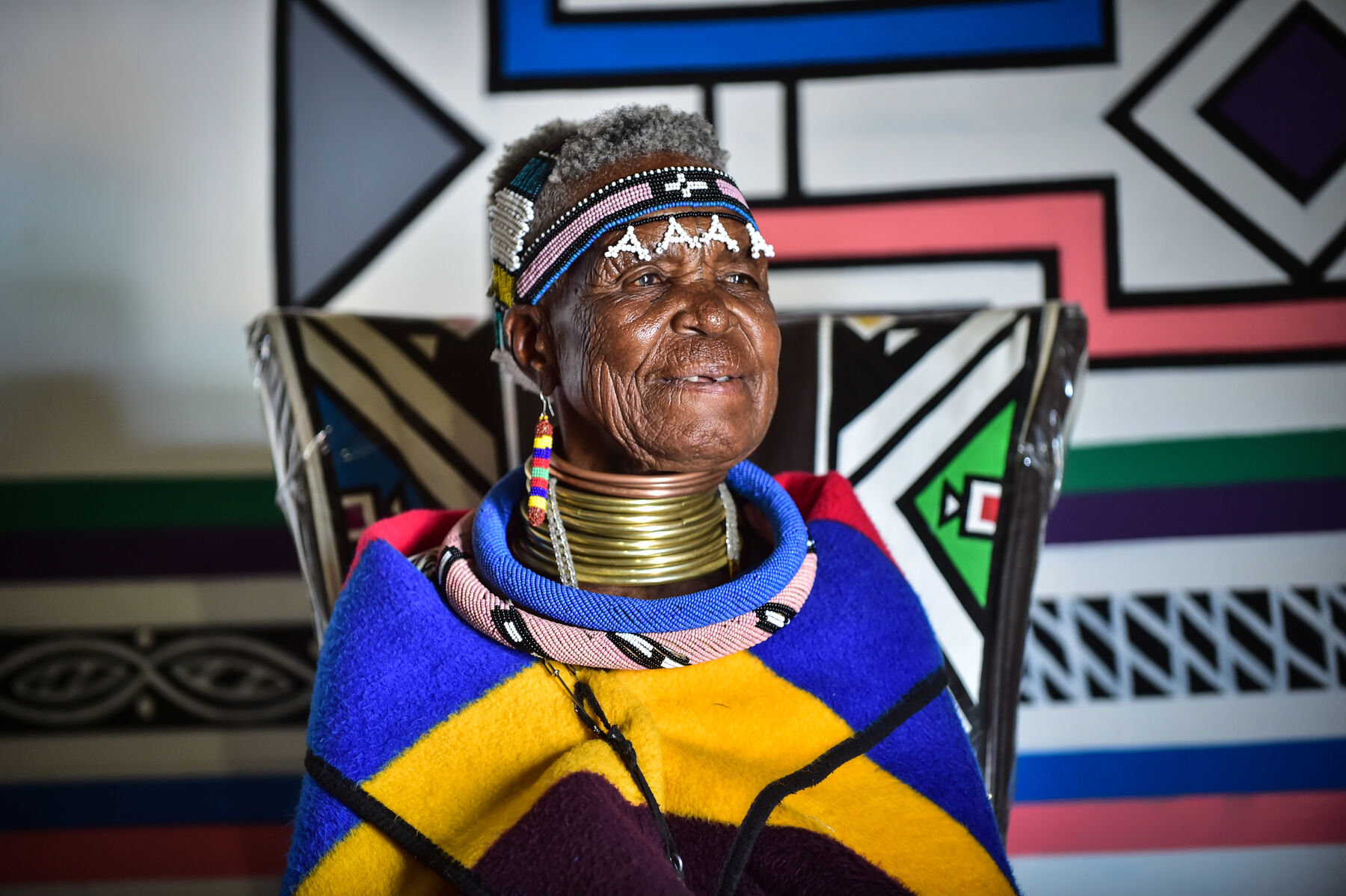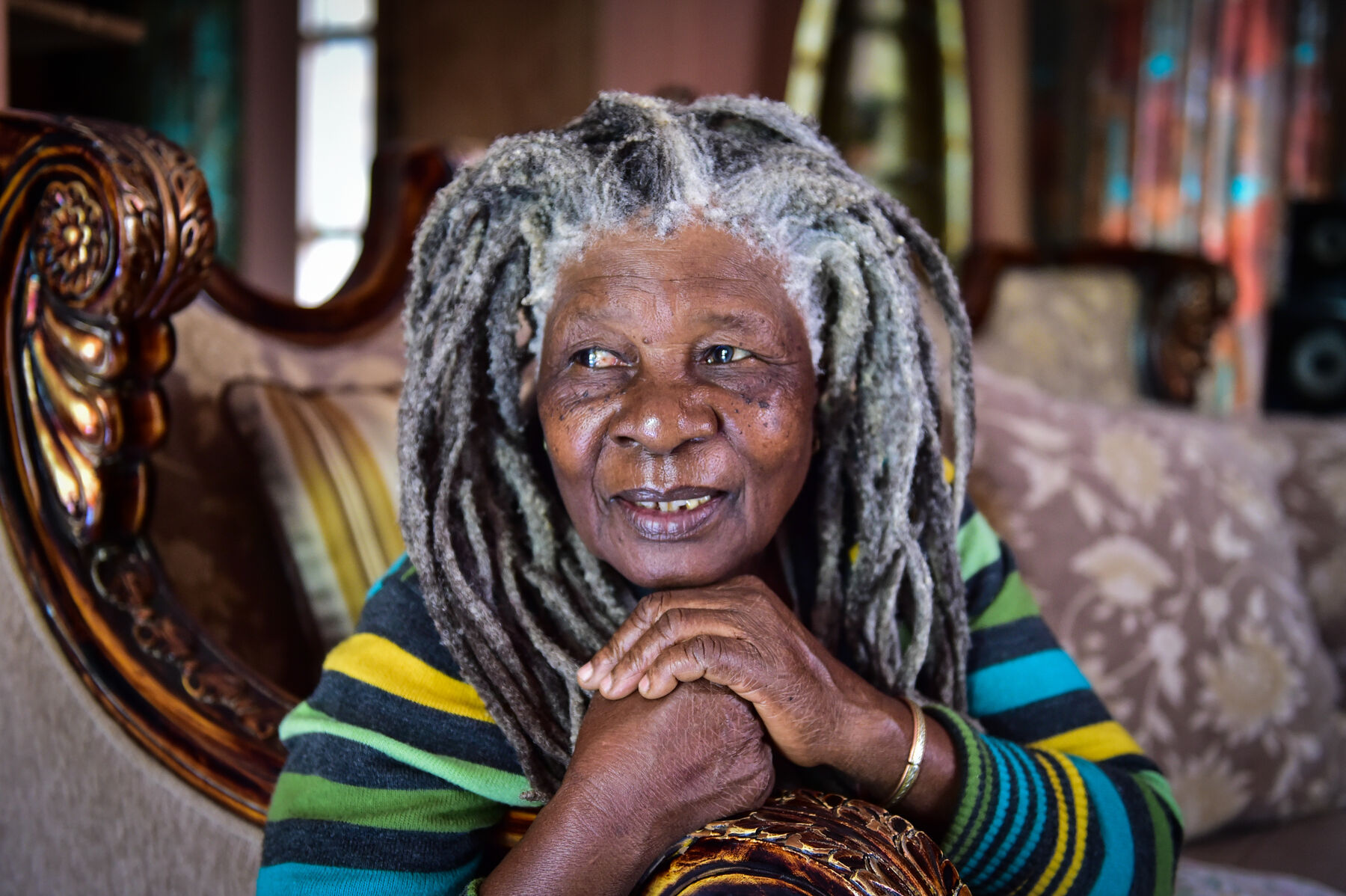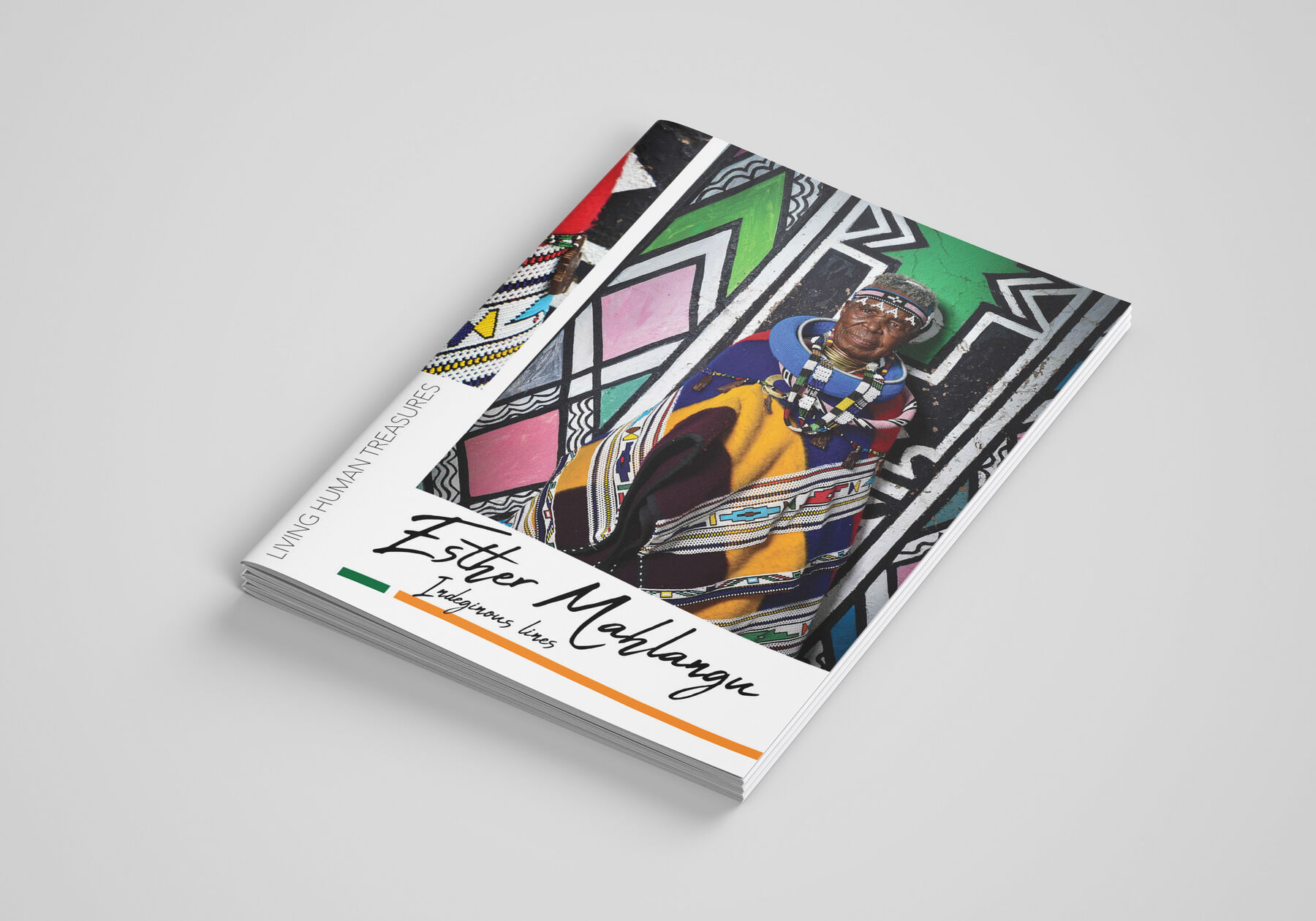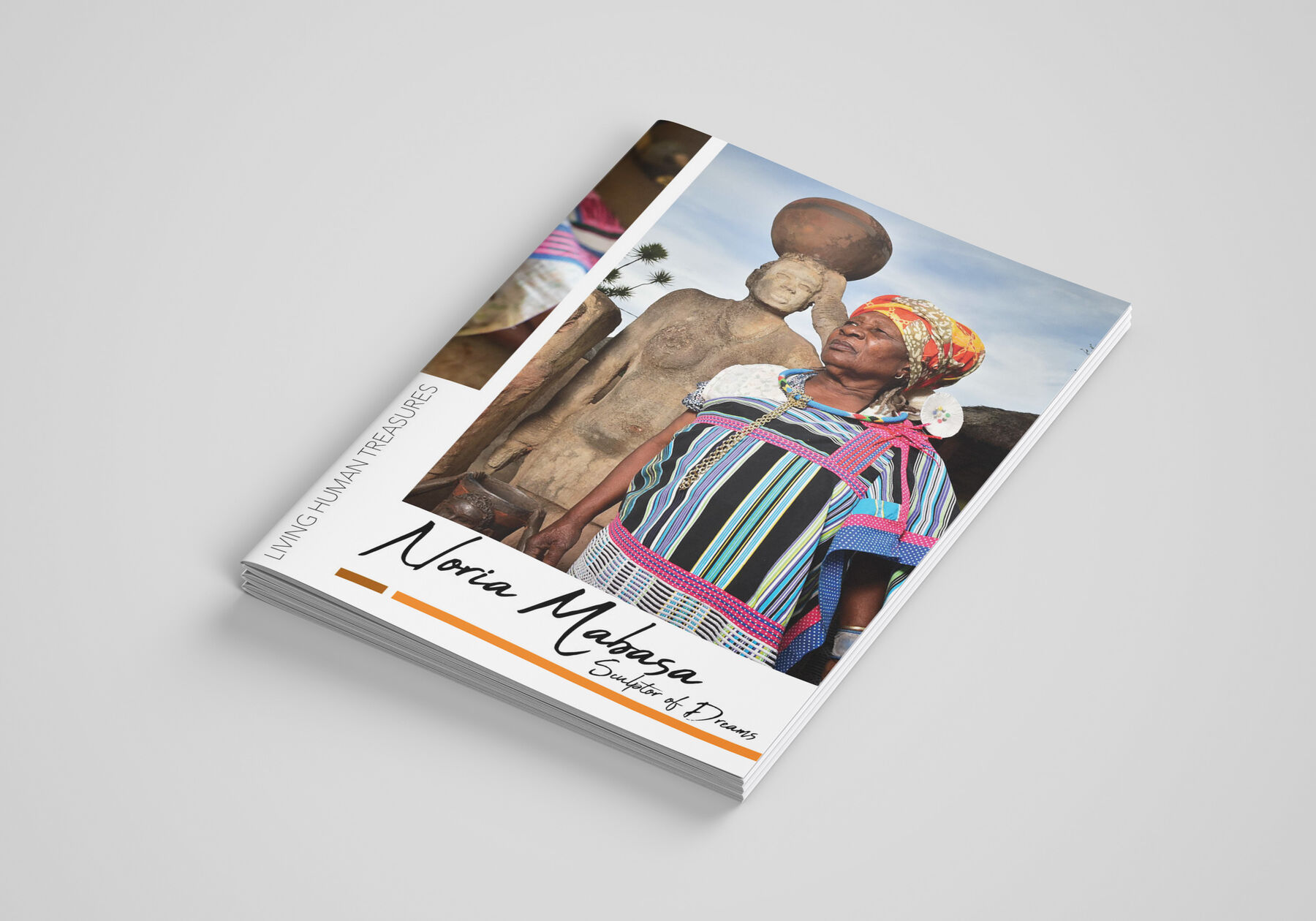How many South Africans get the privilege of spending time with two of South Africa’s most acclaimed artists – Esther Mahlangu and Noria Mabasa? We did.
Flow Communications was given the task of producing two books featuring these doyennes of South Africa’s contemporary art landscape – part of the Department of Arts and Culture’s Living Human Treasures project.
The department defines Living Human Treasures as people who are the custodians of the indigenous knowledge, expressions, customs, traditions and skills that South Africans regard as part of their heritage. The project is designed to ensure that their knowledge is appreciated and shared for the benefit of future generations.
The brief was to produce two small bound books, written in an accessible yet academic style, featuring Mabasa and Mahlangu. This required that the books be produced end to end, starting with research, including interviews with the artists and art experts across South Africa, and ending with two hardcover books. They are part of the department’s series of books on Living Human Treasures.


“Seeing work that you had a hand in come to life is always mind-blowing, so seeing the books was really amazing but, more than anything, knowing that we were a part of a project that also documented such a big part of South African history was really an honour,” says Flow’s Selinah Seipei, who worked on the Mahlangu book.
Mahlangu is a global cultural icon who is as at home on the red carpet with Grammy Award-winning singer and Belvedere (RED) ambassador John Legend as she is sweeping her yard in Mapoch village, Mpumalanga. For more than 50 years, Mahlangu’s artworks, rooted in her Southern Ndebele culture, have been exhibited across the world, from Paris to Tokyo.
Inspired by her dreams, Mabasa is a pioneering sculptor from rural Limpopo who has forged a formidable reputation on the local and global stage since the 1970s. As a female woodcarver in a traditionally male-dominated art form, she fearlessly confronts social issues through her monumental sculptures, which marry Venda mythology and customs with current affairs. Mabasa continues to be instrumental in preserving and passing on indigenous wisdom through her work.
The two doyennes, both in their 80s, were endlessly patient when Flow’s teams arrived to spend a few days interviewing and photographing each of them, separately, at their homes – Mabasa in Limpopo; Mahlangu in Mpumalanga.
“What an absolute privilege to photograph these living South African art legends,” says photographer Steve Lawrence. “They were such a pleasure to direct when setting up the photography shoots and were kind and cooperative … Hopefully we can deliver some printed portraits to them as a token of our appreciation for their hospitality and also to say thank you for the fantastic art they have given South Africa and the world over the years.”

Both artists have told their stories many times, but willingly did so again so that we could interview them with the help of translators such as University of Pretoria academic Sponono Mahlangu.
While Dr Mahlangu is not related to Esther Mahlangu, she was excited to meet the icon with the same surname as herself. “Gogo is a loving, friendly person and she enjoyed sharing her stories ... teaching the local women how to paint shows that she is selfless.”
It was an early start for the team on a spring morning for the 460km drive to Tshino village in Vuwani, Venda, to interview Mabasa.
She was an amazing storyteller. Humble too, it seems. Despite her many decades on this Earth spent “working with the tools and the gift I have been blessed with”, Mabasa says, “Now that I’m older and less strong than I was, I probably should rest. But that’s not who I am – I will keep sharing my knowledge and talents for as long as there’s still life in my body.”
Mahlangu, too, is known for her dedication to passing her skills on to younger generations. That, in fact, has been her clarion call for decades. She is dedicated to preserving her tradition and goes out of her way to make sure that younger people can carry the baton and keep the art and culture alive.
Designing the two books was an exciting part of the project. It was a privilege to showcase some of South Africa’s best artists; it’s part of our heritage and makes us proud to have been part of it.
The design of the books was done in such a way that it did not detract from the women’s artwork. We thought at first that the A5 size would be too small, but the final product is compact and would look great on a bookshelf in a little collection.
Flow strategist Janet Berger says it was “significant” that Flow worked on the two books.
“It’s so important to record the stories of the lives of these amazing women, the obstacles they have overcome and their commitment to their art. It adds such richness to your experience of the work when you know the background story. Celebrating South African art and culture in this way is a significant exercise and the books make the content so easy to engage with.”

